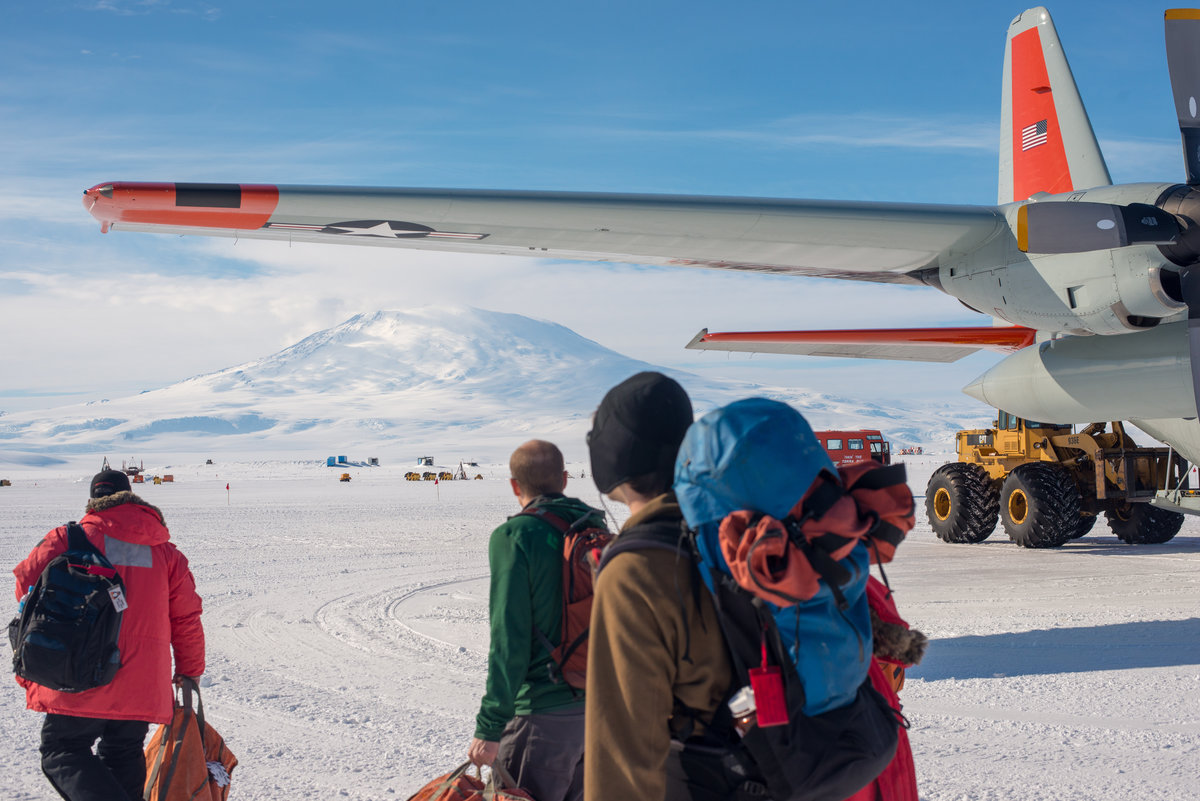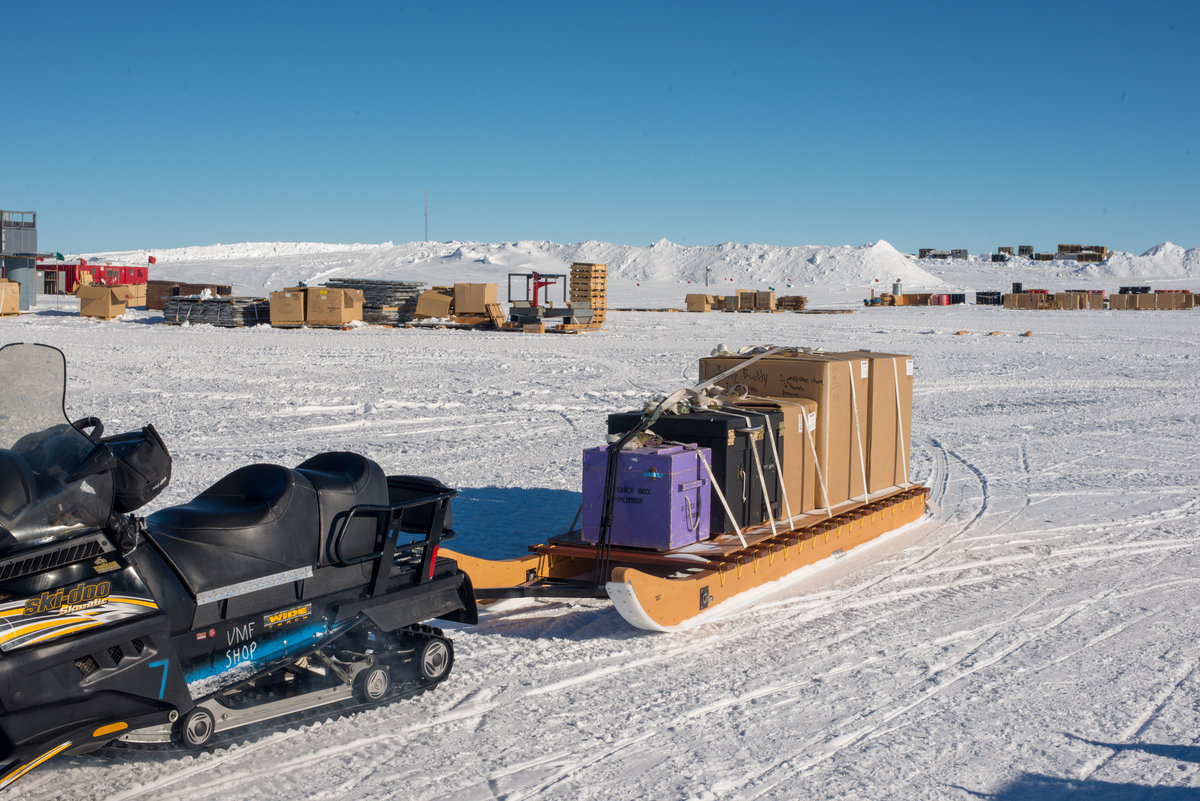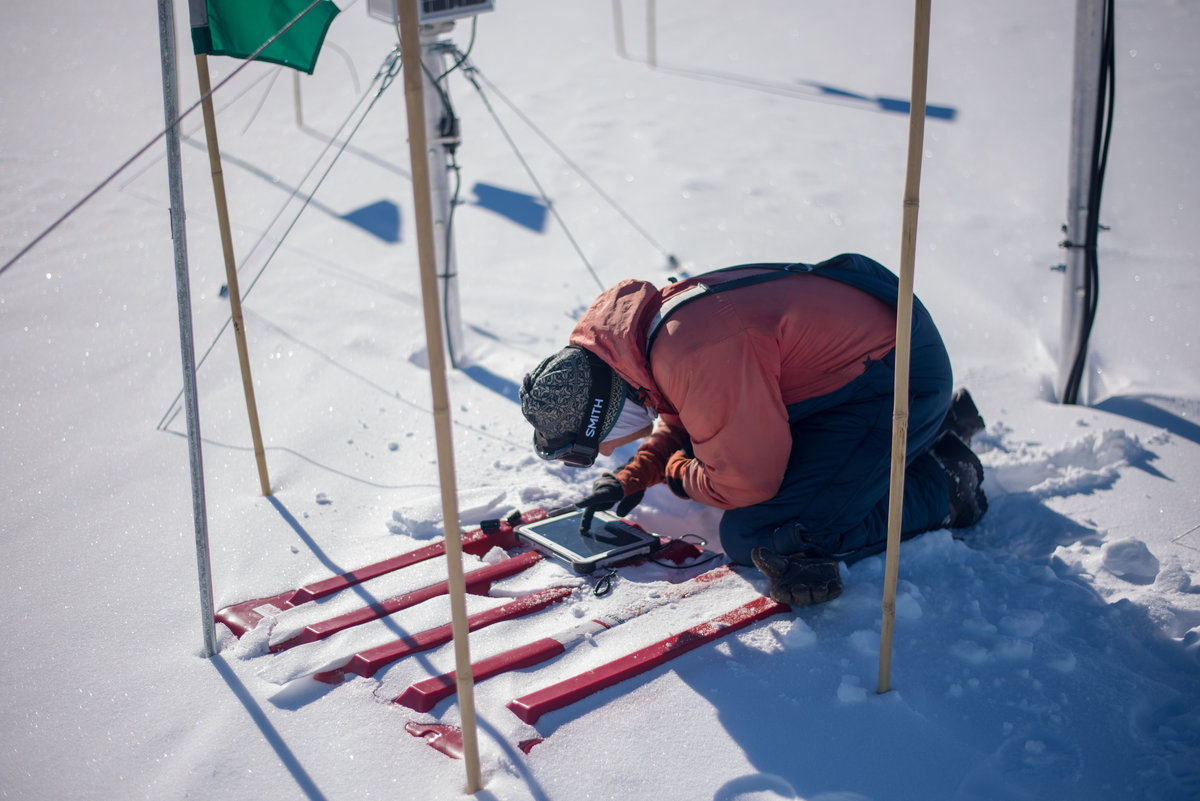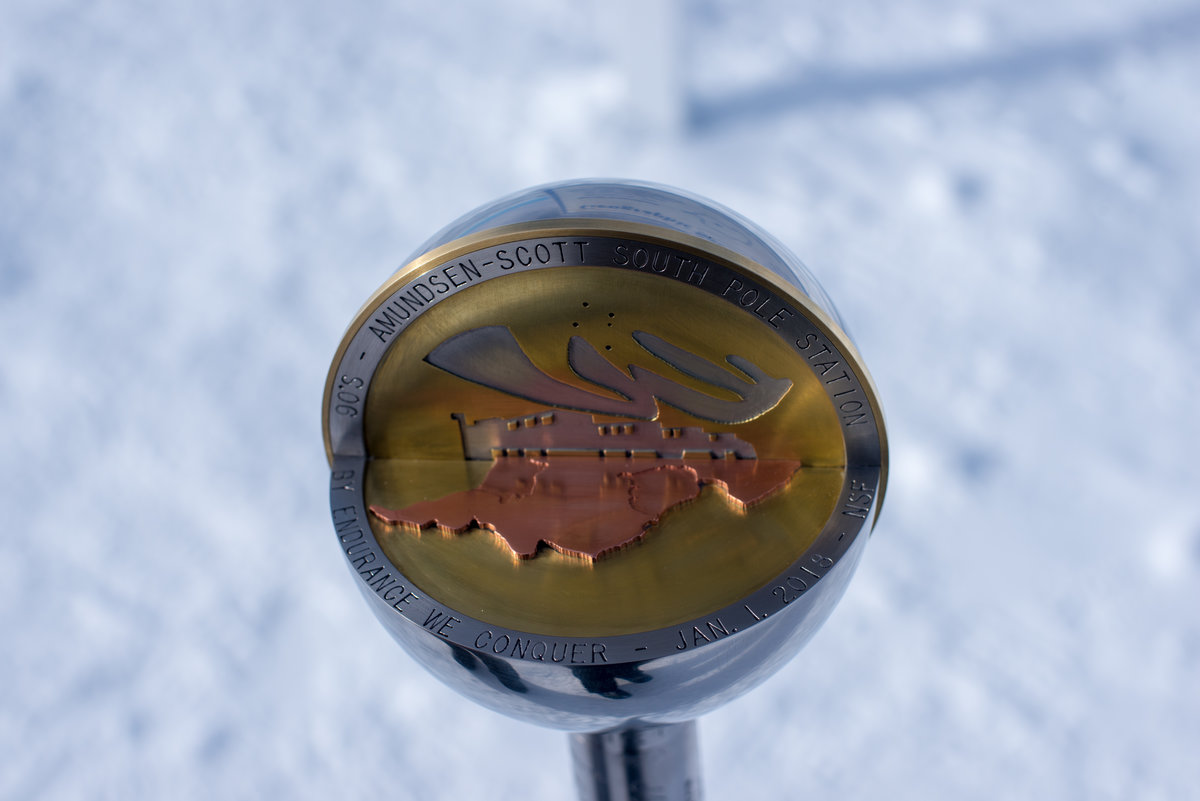2018 South Pole Field Season

I’m freshly back from another field season in Antarctica. This was a quick one, with only about two weeks down at the South Pole, though with transit I was gone for just over a month. We were continuing GPS and radar surveys, logging boreholes, and checking on instruments that had overwintered. The team this year was a subset of the folks we had last year; since we were not drilling and only had a little bit of camping we didn’t have the IDDO folks or Maurice along.
The season started out smoothly, and we miraculously made it to the pole without delays, and Twit and I were able to start our surveying after just a day and a half of acclimatization. We were riding the same snow machines as last year, though Twit’s had a great custom shifter knob added. After our heavy use last year, the belt on that machine had to be replaced, and the tight, new belt prevented the Skidoo from starting in gear. Instead the season was spent with something resembling a manual transmission with no clutch, which worked great!
After a few days of surveying we brought the Conestoga (a “hard-sided structure”) to go and help put in a small camp at our field site from last year. This site, 50 km upstream of South Pole along the flowline, had all the instruments that Max had overwintered and an open borehole for the other David to use to log temperature and density. We were able to get all our equipment out there with just one trip on skidoos, so we loaded up everything onto large sleds and hauled it out the day after Christmas.
Even though we knew it was going to be as we left it, I was still pretty amazed to see our old campsite from few kilometers off, then come to it and find everything as expected. About 20 cm of snow blanketed the site, but flags, solar panels, and a wind turbine made everything easy to find. Even a little remnant of our discarded-ice-core sculptures remained, though it was wind-eroded.
Max left twelve instruments logging compaction of the snow and firn (older snow compacting to ice) over the winter, as well as a string of thermistors down another hole to measure temperature, and we did not know if they had successfully recorded through the six-month night. As it turned out, all the instruments had survived the winter despite -75 C temperatures, and so Max only had to download data, replace one instrument that had failed on installation, and then he was done. David got to logging the borehole straight away since the tools have to move slowly through the hole. In the end the neutron probe was unable to handle the temperatures, same as last year, so he had plenty of time to do the temperature log of the hole.
Skidoo camping is not quite as luxurious as Challenger camping, since you have to do things like wait until you get there to set up your cook tent, but it was still quite comfortable. My best night’s sleep of the whole season was my one night at camp. I think this is a result of the relative humidity; the station is filled with air that was formerly really cold then heated, and so has very little moisture. On the other hand, air at that lower temperature can be close to saturation (it was about 75% relative humidity a lot of the time), so in a tent it does not feel as dry.
Twit and I headed back to the Pole after just one night, and did a couple additional radar profiles to complement those we took the previous year. We took radar profiles for two days, it was back to the GPS survey. Max and David came back the day after we did, and while David logged the temperature in the SPICEcore hole, the other three of us traded off doing GPS. We managed to resurvey almost all of our stake network before running out of time.
We made it back to McMurdo with only a short delay, and were sent off by an incredible halo. We ended up waiting for planes in McMurdo for over a week, during which time Max won the McMurdo marathon. During the delay I saw my first penguins, and was able to work on my computer from the station. After a week I was ready to be home though, and after a brief layover in summery Christchurch came right back to Seattle.













